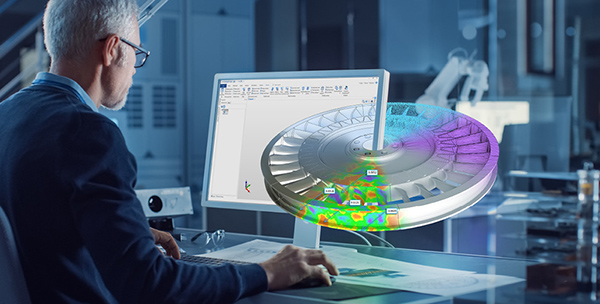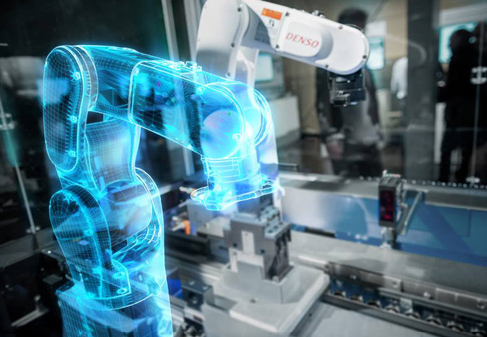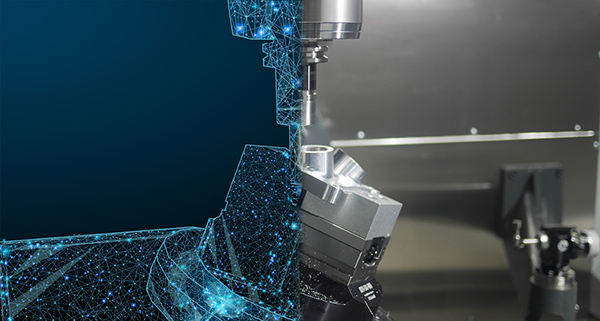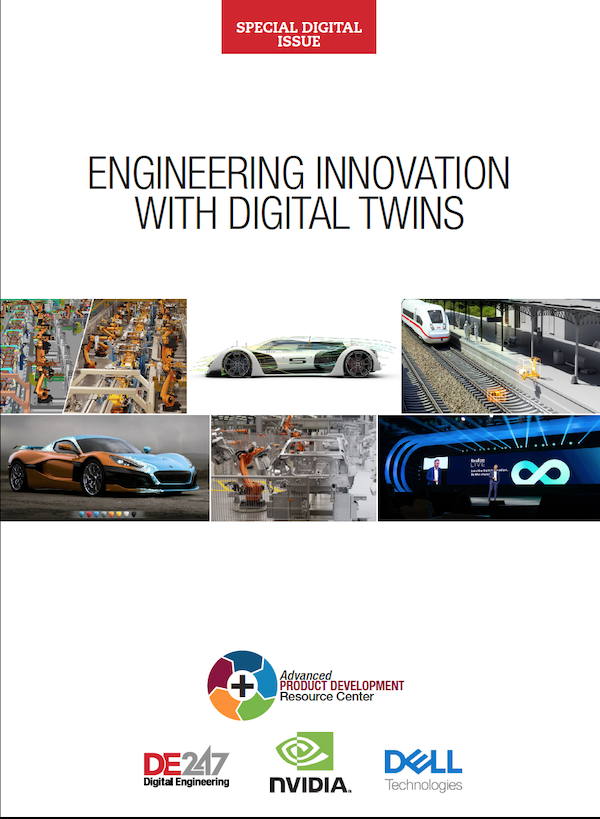Digital Twin Bridges Design and Manufacturing
Twin technology can aid product designers in pulling out vital information from both domains to improve development and production.

Fig. 1: By combining design and manufacturability insights gleaned from digital twins, product developers can avoid delays and costly modifications when the product goes into production. Image courtesy of Hexagon.
Latest News
May 17, 2021
A digital twin, by definition, provides a comprehensive picture of an asset or product, documenting its state as it moves through the various phases of its lifecycle. If the system works properly, all lifecycle stages contribute valuable insights. There are, however, exceptions.
A synergy exists between design and manufacturing that promises significant benefits for product developers, making this combination of forces worthy of closer inspection. Digital twin technology can help product designers extract key insights from the interdependencies between the two domains. This, in turn, allows the engineers to perfect their designs early in the development process, reduce costs and shorten the time required to introduce new products (Fig. 1).
A powerful mechanism that contributes to this process is the feedback loop that links the design and manufacturing worlds. Leveraging industrial internet of things (IIoT) data, developers can work across engineering domains, continuously refine and enhance their designs, and respond to increased product complexity (Fig. 2).
Touch Points and Catalysts
Getting full value from a digital twin, therefore, can be about making the right connections between design and manufacturing. The benefits of this union stem from recognizing the interdependencies between the two worlds and understanding how choices and trade-offs in one domain affect the other.

Fig. 2: Closed-loop digital twin technology aims to feed operational data back to design and automation engineers, creating an opportunity to continuously optimize product design and production activities in a feedback-enabled decision-making process. Image courtesy of Siemens Digital Industries Software.
“Product designers make many choices during product development, some of which are driven by product requirements, but many of which are arbitrary—just based on the designer’s preferences,” says Jonathan Scott, chief architect at Razorleaf.
“For each of those arbitrary decisions, if valuable information exists to influence the engineer’s decisions—say from manufacturing simulation—the design can be enhanced based on that data. Information from the digital process twin can also be used to provide that added data to the designer at the right time—when they are making key decisions and moving the product design forward,” he adds.
One such example is when a development team adjusts material thickness to achieve a particular appearance or to reduce weight. In manufacturing, however, these same choices can cause problems in assembly or as material moves on conveyorized systems. The ability to quantify the impact of downtime and related defects can provide valuable feedback to the product design.
Design teams can extract these insights through the analysis and simulation of an array of manufacturing processes in the design environment—processes that range from component machining and sheet metal forming to injection mold filling.
In another example—this time from the consumer goods sector—marketers may try to use unusual bottle and container shapes to differentiate their products. Sometimes the unusual shapes can pose real problems for manufacturing.

“Being able to correlate design characteristics with assembly fit characteristics can lead to a design that is both marketable and manufacturable,” says John Oskin, president of Sage Clarity Solutions.
A Window on Manufacturing at Scale
The nexus between design and manufacturing is particularly significant when considered in the context of manufacturing at scale, where the goal isn’t to make one part right the first time, but to make many well.
In these situations, design engineers must account for small changes on the factory floor that are difficult, if not impossible, to replicate. Although small, these variations can greatly affect a design’s effectiveness.
“At scale, quality issues can arise from environmental changes or tools simply wearing, leading to statistical deviances in manufacturing processes,” says Keith Perrin, industry director, manufacturing intelligence division, at Hexagon. “Somehow, we must capture these changes and feed them back into the design process. Manufacturers that can digitize the real world and compare it to the digital world have a unique advantage, particularly in large-volume production and assembly.”
Broad Application of Manufacturability
A closer look at the impact of manufacturability issues on designs reveals that such factors spans all industries and production processes.
A subtractive process digital twin can influence product development that can be seen in any lightweighting process.

In this case, a designer identifies the spatial requirements of a part (e.g., envelopes and keep-out zones) as well as interface points (e.g., connections and joints) and then explores how to efficiently remove or add material to generate the lightest possible design based on the manufacturing processes available.
“Simulating the tool paths of subtractive machining gives engineers a unique capability to explore the tradespace of weight, performance and cost,” says Scott.
The same kinds of benefits also can be found in additive manufacturing (AM) applications, although the touch points sometimes differ, depending on the building materials used.
The suitability of AM materials for specific use cases strongly depends on the selected manufacturing process. This requirement is true for applications that use metals, where engineers must consider building direction, surface roughness and porosity.
The link among these factors, however, is even stronger for composite 3D printing. In these cases, the toolpath drives the fiber orientation and largely determines the mechanical behavior of the part.
This can be seen in a technique adopted by Danfoss Power Solutions, a producer of hydraulic and electronic solutions for mobile off-highway equipment. The Danfoss process applies integrated computational materials engineering to create and test a lifting bracket used to transport heavy cast housings in its factories. The company uses a Markforged 3D printer and composite material for fabrication.
Empowered by data extracted from these processes, engineers glean insights that enable them to create better designs.
“By embedding a multi-scale material model in Danfoss’ design engineering tools that accounts for the proprietary print process, engineers can predict the performance of the part, accounting for the fiber alignment and composite properties at a given zone of the structure,” says Hexagon’s Perrin.
Manufacturing Tools Provide Design Info
In broadening the search for resources to enhance the design process, product development teams should not limit themselves to digital twin data provided by traditional design tools. Increasingly, process digital twins make manufacturing modeling and simulation information more accessible for designers, and this data can prove to be invaluable (Fig. 3).
“Individual tools for different types of manufacturing will help when designers apply them upfront during the design process,” says Scott. “Generally speaking, the industry trend toward model-based approaches will make many types of manufacturing simulations more accessible.
“If a complex process simulation tool used only by an experienced manufacturing engineer can be encapsulated in a digital process twin with a small number of input/output parameters, designers can use these complex tools in more instances to influence more designs,” Scott adds.
Toolpath simulation software is an example of this. These programs tell engineers whether the relevant machine tools will cut parts quickly and accurately.
This software offers designers multiple perspectives of the cutting process, with varying degrees of resolution. Currently, most CAD/CAM systems offer basic simulation capabilities, using plug-in modules that simply use cutter-location data. CAM users requiring higher resolution simulations, however, can turn to third-party numerical-control simulation programs, such as CGTech’s VERICUT or Hexagon’s NCSIMUL. These applications offer G-code simulation of all parameters used in the cutting process, to help avoid costly mistakes (Fig. 4).
Today’s toolpath simulation software promises to deliver richer data to designers. One of these programs might identify how a particular strategy could minimize tool changes or reduce costly features, which improves a design’s prospects for success.
Another manufacturing software type that benefits designers is sheet metal formation simulation. Companies such as Ford and Toyota use this simulation software to assess whether a part is formable, to define trimline modifications that maximize material use, and to identify opportunities to downgauge materials.
“Historically, this was the basis for concept sign-off and budget creation so that design and engineering could get started,” says Perrin. “What we’ve found in recent years is that increasing numbers of automakers are scrutinizing the material gauge and usage to squeeze performance into a ‘weight budget.’ Automakers are seeking upfront virtual manufacturing tools to better assess the cost and manufacturability of lighter materials.”
Material Insights
A relatively new genre of manufacturing modeling and simulation software is emerging that examines the effect that materials have on production processes. The data generated by this software promises to shed new light on key design considerations.
“Process simulation is a key element of the development stage and makes it easier for the designer, forming specialist or advising team to identify how to use new materials, such as advanced high-strength steels, magnesium and aluminum alloys, which require new techniques and associated process plans,” says Perrin. “New materials have different processes and unique behaviors that can influence styling and design.”
Multi-scale material modeling, which describes the behavior of a material by bringing together data from various sources, is the software for this specialty. This software can be used for different types of simulation that can provide insights into the efficacy of a product’s design and its manufacturing processes.
For example, engineers can use multi-scale material modeling tools to better use reinforced polymers and advanced composites in production by accounting for their performance as they are manufactured.
In many instances, materials aren’t used to their full potential because manufacturers don’t have the knowledge, resources and processes in place to efficiently and cost-effectively determine how to maximize their potential.
By embedding material-modeling technologies within simulation software, the technology can help companies achieve lightweighting goals and avoid overengineering products made with expensive materials.
Most recently, multi-scale material modeling and simulation software has proven valuable in AM applications, but AM is only one of the areas engineers can apply these technologies. The software also supports a wider array of discrete manufacturing processes, such as stamping, die, mold, numerical control, drilling, milling, turning, rolling, casting, welding, wintering, forging and composites.
PLM’s Challenges
Although specialized modeling and simulation tools provide valuable insights that enable greater symbiosis between design and manufacturing, the foundation upon which digital twin and the interaction between the two engineering domains remains the product lifecycle management (PLM) system.
That said, a few nagging questions haunt efforts to increase the use of manufacturability in the design and development processes: Are PLM platforms equipped to break down the barriers that separate the design and manufacturing data silos? Can PLM software open the door for greater symbiosis and enhance the product development efficiency?
PLM software vendors contend their technologies are up to the task.
“PLM brings together the two worlds of engineering and production, providing a common view of the data,” says Kevin O’Brien, divisional general manager of the PLM segment at PTC.
This is not to say that the task of tearing down the data silos is going to be easy.
“While there are many point solutions that create and capture dimensions of the digital twin, companies are challenged to create a holistic, closed-loop digital twin,” says Andy Macleod, director of strategic marketing and branding at Siemens Digital Industries Software.
“The best way to bring a closed-loop digital twin together is to invest in a seamless digital thread that can connect product development, manufacturing and real-world performance information. This requires a PLM system to manage the virtual product development and manufacturing information, then connect it with a high-volume IIoT system that collects real-time information from physical products and feeds it back to product development and manufacturing,” he says.
Gathering the information, however, is only the first step. Companies then need the PLM system to manage the complexity of relationships and processes such as configuration and change management. For the more traditional PLM systems, it means enhancements and accommodations are required.
“Improved connectedness between design and manufacturing can help organizations increase shop-floor visibility,” says Richard Howells, vice president of solution management for digital supply chain, SAP America.
Connectivity, however, is a many layered challenge. Some hurdles directly relate to the links between design and manufacturing.
“PLM tools are well suited to manage manufacturing planning data, but less well-equipped to manage the transactional data associated with operations on the shop floor,” says Scott. “The digital process twin should be born out of an interface between PLM and MES/MOM [manufacturing execution system/manufacturing operations management] systems because it needs to come to life using live data and feedback from the shop floor. This is the data that MES and MOM systems provide through IIoT.”
Other challenges, however, are general, but call for fundamental changes in the way PLM platforms handle data, focus on openness and flexibility. In response to these new demands, some software providers look to emerging technologies for solutions.
“If you look at modern, cloud-native product-development practices, most enterprises are adopting open, flexible development systems that enable them to use the best of what’s available and drive the dynamic, adaptive, autonomous systems and processes they need,” says Perrin.
“They’re a combination of Agile services, connected through APIs that enable interoperability,” Perrin adds. “When we look at the future of PLM, this is what we see, not a rigid set of dogmatic ideas around a single source of truth and old-school ideas of process management.”
Advocates of this open approach contend that companies, armed with more flexible systems, will see mechanical product development that’s more analogous to the continuous-development techniques used for software. They assert that the digital twin is nothing more than a software artifact that represents a physical product. So why can’t companies develop digital twins with modern development ideas?
Looking at the shape and substance of PLM from the varied industry perspectives, it is clear that the technology—much like the emerging digital twin—is being reinvented seemingly on a daily basis. The few constants are change and adaptation.
More Hexagon Manufacturing Intelligence Coverage
More PTC Coverage
Subscribe to our FREE magazine, FREE email newsletters or both!
Latest News







